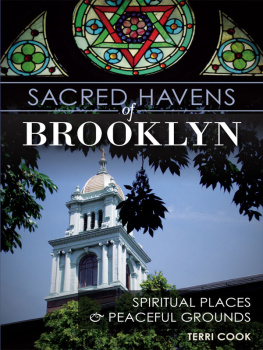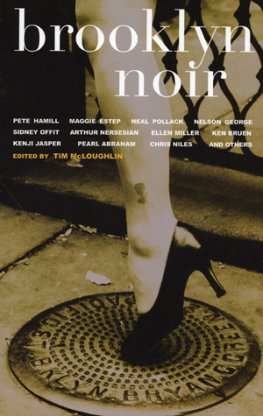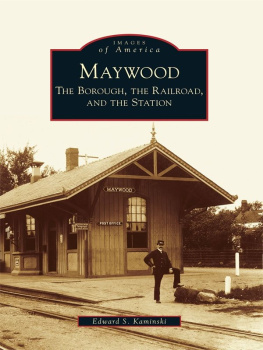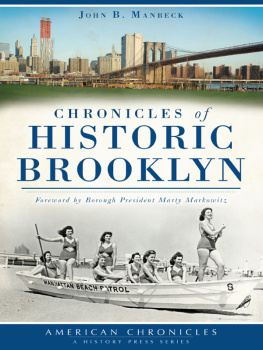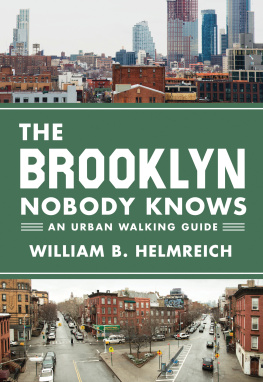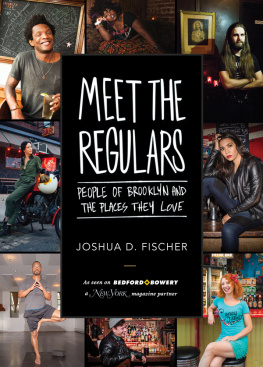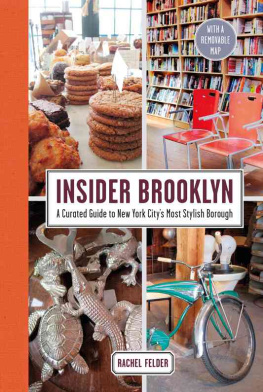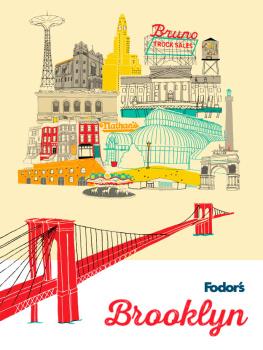
Published by The History Press
Charleston, SC 29403
www.historypress.net
Copyright 2013 by Terri Cook
All rights reserved
Front cover: Stained-glass panel in Red Hook Pentecostal Church. Steeple of the Cathedral of St. James.
All photographs by the author unless otherwise noted.
First published 2013
e-book edition 2013
Manufactured in the United States
ISBN 978.1.62584.051.6
Library of Congress CIP data applied for.
print edition ISBN 978.1.60949.982.2
Notice: The information in this book is true and complete to the best of our knowledge. It is offered without guarantee on the part of the author or The History Press. The author and The History Press disclaim all liability in connection with the use of this book.
All rights reserved. No part of this book may be reproduced or transmitted in any form whatsoever without prior written permission from the publisher except in the case of brief quotations embodied in critical articles and reviews.
This book is lovingly dedicated to the family of Arthur C. Kentler (19272000) and his twin sister, Jeanne Kentler Flaherty (19272001), whose Brooklyn roots are engraved on the faade of the Kentler Art Gallery in Red Hook, which was built as the family dry goods store in 1854.
And with gratitude to my family and friends, to librarians and archivists and to those who care for spiritual places.
Contents
Introduction
Many say that Brooklyns diversity is reflected in clusters of ethnic restaurants and multiple styles of architecture. I believe its distinctness lies in its sacred havens, and I invite you to come along for a more enlightened tour, discovering Brooklyn through the eyes of its churches, synagogues, temples and public gardenshistoric sites that anchor neighborhoods and celebrate the deep spiritual roots of immigrant settlers and their descendants.
Visit churches and graveyards from 1654 developed by the Dutch, who named Breuckelen (meaning marshland) after a Netherlands village. The first Roman Catholic church, Cathedral of St. James, has witnessed two centuries of Brooklyns growth from the same site. Sanctuaries, built by freed black slaves, functioned as safe houses and evolved as pivots for social activism. This book will guide you to public parks that restore harmony to the spirit, Buddhist temples filled with peace and Jewish sects with nearly 150 public synagoguesand almost as many in private homes. Learn about havens that help assimilate Hispanic and Caribbean worshipers into American culture and tour Arab havens for the Christian Rite and mosques that call Moslems to prayer five times a day.
When three bridges were opened to Brooklyn, land was readily available, busy waterfronts offered jobs and the lure of healthier living and salty breezes attracted many from crowded Manhattan tenements. Migrants thrived where they could freely work and worship, and in thanksgiving for these fundamental American rights, these settlers built more than two thousand spiritual places, which they utilized not only for solemn rituals but also as social and cultural centers, thus elevating Brooklyn to become the borough of churches.
Part I

Carlmelo Booc.
Downtown Brooklyn
And you that shall cross from shore to shore years hence are more to me, and more in my meditations, than you suppose. These words, from Crossing Brooklyn Ferry, recall Walt Whitmans spiritual love of humanity but also pay homage to a mode of transport that inspired artists and offered lifelines to early settlers. In the coming years, bridges, highways and trains would do likewise, bringing impressive growth to the city of Brooklyn, which would merge with New York City in 1898. Its downtown neighborhood, always the industrial center and governing seat, remains filled with courthouses, commercial offices and its own Borough Hall, all of which reflect the evolution of Brooklyns immigrants. Descendants would move to suburbia, leaving their ancestors history rooted in the areas buildings, especially its sacred havens.
The former Bridge Street Church (see Bedfort-Stuyvesant), constructed in 1846 as the First Free Congregational Church, is now Polytechnic Institutes student center. In spite of the major revitalization of MetroTech and Renaissance Plaza, spiritual places have persevered and continue to welcome newcomers to this historic district bustling with activity and enduring memories of the ferryboat that was once synonymous with downtown Brooklyn. Be sure to visit Walt Whitman Park (Cadman Plaza East and Adams Street) to see more of the native sons words engraved on the faade of a granite fountain.
THE CATHEDRAL BASILICA OF ST. JAMES
During the eighteen century, Brooklyn Roman Catholics would travel by ferry to St. Peters Church on Barclay Street, Manhattans first Roman Catholic parish, built in 1785. In turn, Reverend John Power visited commuters, held services in their homes and, during 1818, celebrated the first public Mass in Irish Town, at Purcells Inn on York and Gold Streets (also known as Vinegar Hill).
Peter Turner, a local grocer, would head a lay committee to purchase the present property, and the congregation, along with Bishop John Connolly from St. Patricks Old Cathedral in Manhattan, dedicated the first church on Long Island in 1823. An academic school was followed by a Sunday school, but the church would not be without controversy.
Father John Farnan of Ireland, assigned as the first pastor in 1825, wanted to establish an independent American Catholic Church with no allegiance to Rome. He soon left St. James for his new venture, which evolved into a financial disaster. After the bank foreclosed on the property, the fifth New York archbishop, John Hughes, took control and suspended the radical priest, eventually sending him to Detroit. In 1842, Farnans building would be dedicated as the Church of the Assumption (see Brooklyn Heights).

Patron James holding the church building.
In about 1845, many Irish immigrants affected by famine conditions crowded into Brooklyn, contributing to the churchs enormous growth and necessitating the creation of the Diocese of Brooklyn by Pope Pius IX in 1853. Since it would have its own bishop, St. James Church was designated a cathedral (from the Latin cathedra, chair of the bishop) as the seat of Irish-born John Loughlin (18171890), Brooklyns first bishop. He had been pastor of St. Patricks Old Cathedral in Manhattan and would serve the new diocese for thirty-eight years, skillfully planning church, school and hospital buildings.
Land was soon purchased for a grander cathedral, and St. James was temporarily assigned as pro-cathedra (in place of). Since money was always prioritized for schools and hospitals, the new cathedral on Clermont Avenue had to be cancelled, and it became the site of Bishop Loughlin High School. (St. James returned to full cathedral status only in 1972.) Continuous growth would see the diocese divided in 1957 into Kings and Queens Counties, including Staten Island, and Nassau and Suffolk Counties as the new Diocese of Rockville Center.
Pope John Paul IIs visit on his first trip to America in 1979 is remembered with a copper plaque on the exterior church wall. Look inside the narthex (the lobby) for a rare decree from Rome in 1982 designating the cathedral as a basilica, an honorary title meaning historically or liturgically important. Official symbols of the tintinnabulum (a small bell) and ombrellino (papal head covering) were installed in 1997 by Bishop Thomas V. Daily, who chose
Next page
